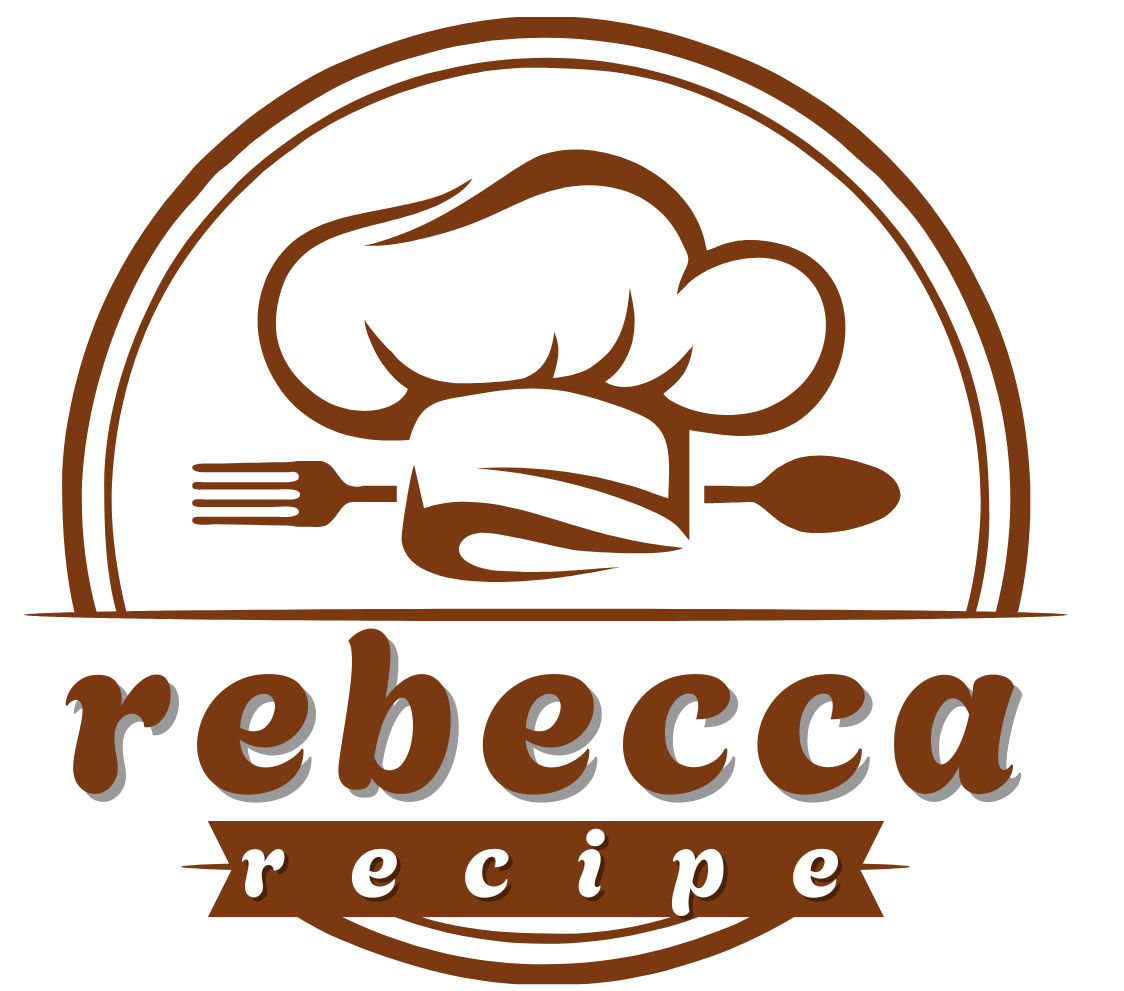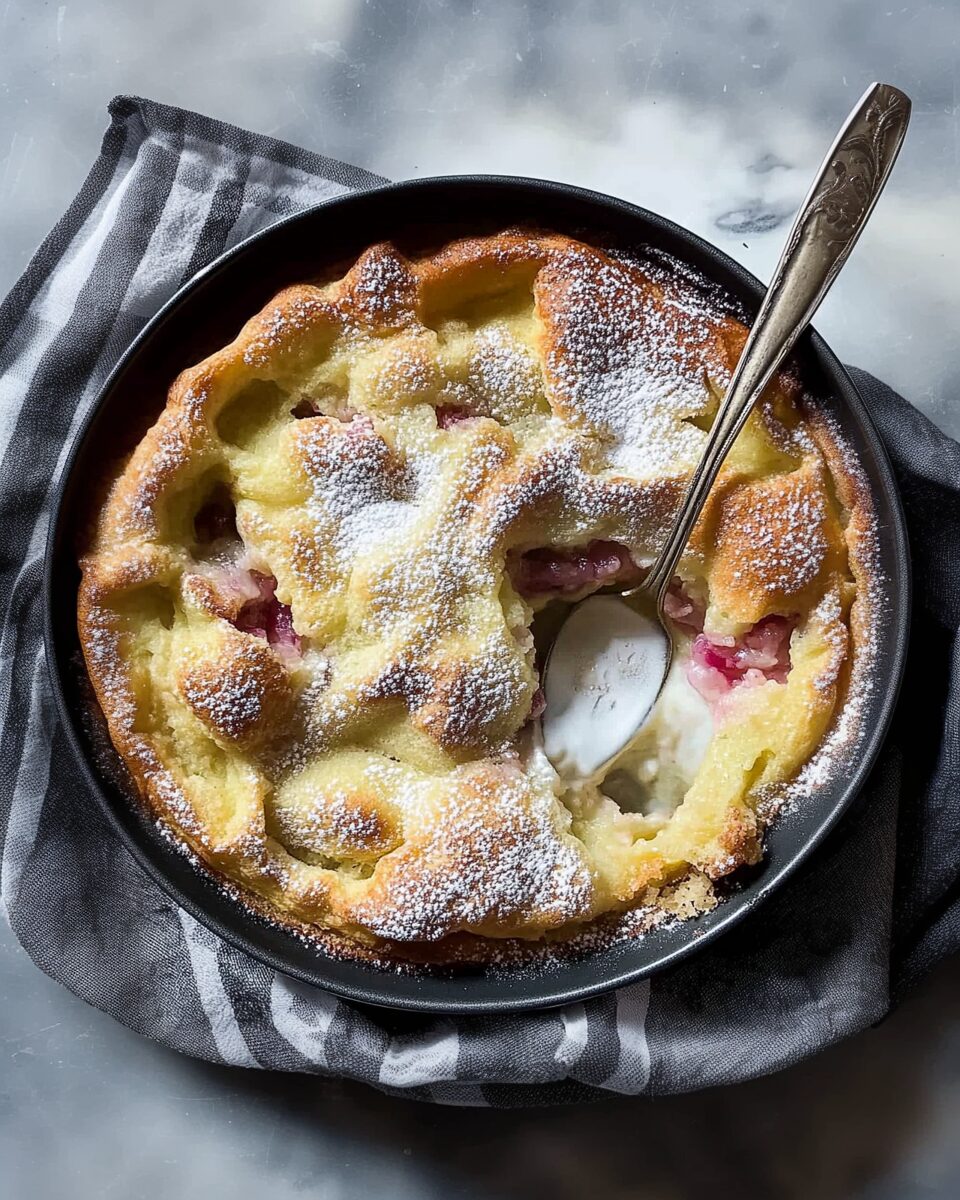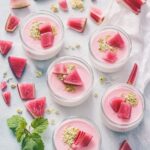A Rhubarb Dutch Baby combines the light, puffy texture of a traditional Dutch baby pancake with the tart sweetness of roasted rhubarb. This delightful dish is versatile, suitable for breakfast, brunch, or dessert. The process involves roasting rhubarb in a skillet, preparing a simple batter, and baking everything together until golden and puffy. Serve it warm, dusted with powdered sugar, or topped with a scoop of vanilla ice cream for an indulgent treat.
Full Recipe:
Ingredients
For the Roasted Rhubarb:
- 3 cups diced rhubarb (about 1/2-inch pieces)
- 1/4 cup brown sugar
- 1 tablespoon all-purpose flour
For the Dutch Baby Batter:
- 2 tablespoons unsalted butter, melted and cooled
- 4 large eggs
- 3/4 cup whole milk
- 3/4 cup all-purpose flour
- 1 tablespoon granulated sugar
- 1 teaspoon vanilla extract
- Pinch of fine salt
For the Pan:
- 2 tablespoons cold unsalted butter, cut into pieces
For Serving:
- Powdered sugar, for dusting
- Vanilla ice cream, optional
Directions
- Roast the Rhubarb: Preheat your oven to 400°F (200°C). In a bowl, toss the diced rhubarb with brown sugar and flour until well-coated. Place the mixture into a 10-inch cast-iron skillet. Transfer the skillet to the oven and roast for about 15 minutes, stirring halfway through, until the rhubarb is tender and has released its juices. Remove from the oven and set aside.
- Prepare the Batter: While the rhubarb is roasting, in a blender, combine the melted butter, eggs, milk, flour, granulated sugar, vanilla extract, and salt. Blend until the batter is smooth. Let the batter rest for a few minutes.
- Heat the Skillet: After roasting the rhubarb, remove the skillet from the oven. Place the cold butter pieces into the skillet and swirl to melt and coat the bottom.
- Assemble and Bake: Pour the batter over the roasted rhubarb in the skillet. Return the skillet to the oven and bake for 20-25 minutes, or until the edges are puffed and golden brown. The center may still be slightly wobbly but will firm up as it cools.
- Serve: Remove the skillet from the oven. Let the Dutch baby cool for a few minutes. Dust with powdered sugar and, if desired, top with vanilla ice cream. Slice and serve warm.
Nutrients (Estimated per serving, assuming 8 servings)
- Calories: Approximately 250 kcal
- Carbohydrates: 35g
- Protein: 6g
- Fat: 10g
- Saturated Fat: 5g
- Cholesterol: 95mg
- Sodium: 150mg
- Sugar: 20g
- Fiber: 2g
- Calcium: 50mg
- Vitamin C: 5mg
The Dutch Baby Pancake: A Classic Favorite
Before diving into the unique variation of the Rhubarb Dutch Baby, it’s important to understand the origins of the traditional Dutch baby pancake. The Dutch baby is a type of large, oven-baked pancake that puffs up dramatically as it cooks. It is similar to a popover or Yorkshire pudding but typically served as a sweet dish rather than a savory one.
The history of the Dutch baby pancake is somewhat unclear, with various theories about its origin. Some sources claim that the dish was invented in the early 1900s by a German immigrant family in Washington state. The name “Dutch baby” is thought to be a distorted version of “Deutsch,” which is German for “German.” Another theory suggests that the dish was a variation of a traditional German pancake called “pfannkuchen.” Regardless of its true origins, the Dutch baby pancake has become a beloved dish, especially in the United States, where it is frequently served with fresh fruits, powdered sugar, and syrup.
The beauty of the Dutch baby is its simplicity. The batter is easy to prepare, and once it’s poured into a hot, buttered skillet, it bakes into a golden, puffy, and slightly crisp pancake. It is typically topped with a variety of ingredients, from fresh berries and whipped cream to savory options like bacon and eggs. The Rhubarb Dutch Baby is an inventive variation that brings a refreshing tartness to the dish.
Why Rhubarb? The Tangy Addition
Rhubarb is a vegetable that is often mistaken for a fruit due to its tart, fruity flavor, which makes it the perfect addition to a sweet dish like the Dutch Baby. This perennial plant is known for its vibrant red stalks, which have a tangy taste that contrasts wonderfully with the sweetness of other fruits and ingredients. Although the leaves of rhubarb are toxic and should never be consumed, the stalks are completely edible and versatile in cooking.
Rhubarb has been used in cooking for centuries, particularly in desserts, jams, and pies. Its tartness makes it an excellent companion for sweet fruits like strawberries, making it a favorite in pie recipes. However, its versatility extends beyond desserts, and it can be roasted, stewed, or used in savory dishes as well.
In the case of the Rhubarb Dutch Baby, roasting the rhubarb before adding it to the pancake batter enhances its natural sweetness while maintaining its characteristic tartness. The roasting process caramelizes the sugars in the rhubarb and softens it, making it a perfect filling for the Dutch baby. The rhubarb provides a burst of flavor that contrasts beautifully with the soft, eggy texture of the pancake.
How to Perfect the Rhubarb Dutch Baby
While making a Dutch baby pancake is simple, perfecting the Rhubarb Dutch Baby requires attention to detail. The following tips will help ensure your dish comes out light, fluffy, and full of flavor.
- Use Fresh Rhubarb: The quality of the rhubarb plays a significant role in the final flavor of the dish. Choose rhubarb with bright red stalks, as this indicates freshness and sweetness. Avoid stalks that are too thick, as they can be fibrous and tough. You can also mix rhubarb with other fruits, such as strawberries, for added flavor and sweetness.
- Roast the Rhubarb: Roasting the rhubarb before adding it to the pancake batter intensifies its flavor. Toss the rhubarb with sugar and flour to coat it before roasting. This helps draw out the natural juices and caramelize the sugars, making the rhubarb softer and sweeter.
- Use a Hot Skillet: To achieve the signature puffiness of a Dutch baby, it’s essential to preheat the skillet before adding the batter. A hot skillet ensures that the batter cooks evenly and quickly, creating the crispy edges that make the dish so appealing.
- Don’t Overmix the Batter: For the perfect texture, mix the batter just enough to combine the ingredients. Overmixing can lead to dense, chewy pancakes, which is not the desired result. The batter should be smooth but not overly beaten.
- Watch the Baking Time: The Dutch baby will puff up dramatically as it bakes. Keep an eye on it during the baking process to ensure it doesn’t overcook or burn. The edges should be golden and crispy, while the center remains slightly soft and airy.
Variations and Customizations
While the Rhubarb Dutch Baby is delicious as is, there are plenty of ways to customize the recipe to suit your tastes. Here are some ideas for variations:
- Add Other Fruits: While rhubarb is the star of this dish, you can add other fruits to complement the tartness. Fresh berries like strawberries, blueberries, or raspberries work well with rhubarb. You can also experiment with tropical fruits like mango or pineapple for a unique twist.
- Top with Whipped Cream or Ice Cream: To make the dish even more indulgent, serve the Rhubarb Dutch Baby with a dollop of whipped cream or a scoop of vanilla ice cream. The creaminess balances out the tartness of the rhubarb and adds an extra layer of richness.
- Incorporate Nuts or Seeds: For added texture and flavor, consider sprinkling toasted nuts such as almonds or walnuts over the Dutch baby. These can provide a nice crunch and nutty flavor that pairs well with the fruitiness of the rhubarb.
- Infuse with Spices: If you want to elevate the flavor profile, try adding a dash of cinnamon, nutmeg, or vanilla extract to the batter. These warm spices complement the tart rhubarb and add a comforting, aromatic note to the dish.
- Go Savory: While the Rhubarb Dutch Baby is typically a sweet dish, you can make it savory by omitting the sugar and adding ingredients like cheese, herbs, or even sautéed vegetables. This variation would make an excellent brunch or lunch option.
Nutritional Benefits of Rhubarb Dutch Baby
Although a Rhubarb Dutch Baby is often considered a treat, it does provide some nutritional benefits, especially when made with fresh ingredients. Rhubarb is low in calories but rich in vitamins and minerals, particularly vitamin K, which is essential for bone health. It also contains significant amounts of fiber, which aids in digestion.
The eggs and milk in the batter provide protein and calcium, which are important for muscle repair and bone strength. The butter used in the recipe adds a bit of healthy fat, although it should be consumed in moderation. For those looking to lighten the dish, you can substitute ingredients like low-fat milk or a dairy-free alternative.
While this dish may not be classified as a “health food,” it can be part of a balanced diet when enjoyed in moderation. You can also adjust the recipe to suit dietary preferences, such as making it gluten-free by using a gluten-free flour blend or substituting non-dairy milk for those who are lactose intolerant.
Conclusion
The Rhubarb Dutch Baby is a delightful, versatile dish that blends the rich, fluffy texture of a Dutch baby pancake with the tangy freshness of roasted rhubarb. It’s a perfect choice for breakfast, brunch, or dessert, offering a satisfying combination of flavors and textures. Whether you prefer a classic version or enjoy experimenting with variations, this dish is sure to become a favorite in your culinary repertoire.






